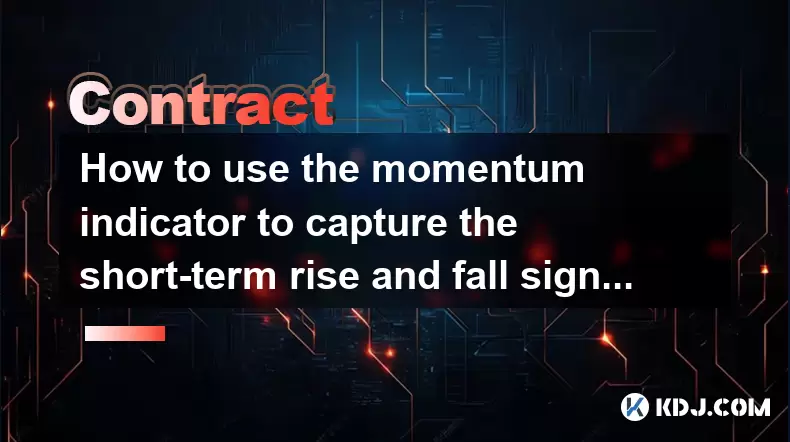-
 Bitcoin
Bitcoin $105,278.9859
4.61% -
 Ethereum
Ethereum $2,414.7741
8.20% -
 Tether USDt
Tether USDt $1.0007
0.05% -
 XRP
XRP $2.1600
7.53% -
 BNB
BNB $639.5433
3.75% -
 Solana
Solana $144.3830
9.37% -
 USDC
USDC $1.0001
0.02% -
 TRON
TRON $0.2742
3.84% -
 Dogecoin
Dogecoin $0.1640
8.57% -
 Cardano
Cardano $0.5811
7.49% -
 Hyperliquid
Hyperliquid $37.2466
5.28% -
 Sui
Sui $2.8243
14.84% -
 Bitcoin Cash
Bitcoin Cash $460.8816
2.22% -
 Chainlink
Chainlink $12.9580
11.75% -
 UNUS SED LEO
UNUS SED LEO $9.1359
1.23% -
 Avalanche
Avalanche $18.2302
10.30% -
 Stellar
Stellar $0.2463
7.80% -
 Toncoin
Toncoin $2.9151
7.18% -
 Shiba Inu
Shiba Inu $0.0...01163
9.79% -
 Hedera
Hedera $0.1532
14.01% -
 Litecoin
Litecoin $85.3310
6.29% -
 Monero
Monero $308.8215
2.90% -
 Ethena USDe
Ethena USDe $1.0007
0.03% -
 Polkadot
Polkadot $3.4259
9.42% -
 Dai
Dai $1.0002
0.01% -
 Bitget Token
Bitget Token $4.1742
3.19% -
 Uniswap
Uniswap $6.8272
8.53% -
 Pepe
Pepe $0.0...09939
12.29% -
 Pi
Pi $0.5358
6.03% -
 Aave
Aave $257.3092
12.83%
How to use the momentum indicator to capture the short-term rise and fall signals of the contract?
The momentum indicator helps crypto traders spot trend strength and reversals by comparing current and past prices, guiding entry and exit decisions in contract trading.
Jun 24, 2025 at 05:14 am

Understanding the Momentum Indicator in Cryptocurrency Trading
The momentum indicator is a popular technical analysis tool used by traders to measure the speed and strength of price movements. In cryptocurrency trading, especially within contract markets such as futures or perpetual contracts, this oscillator helps identify potential turning points in price trends. It compares the current closing price with the closing price from a specific number of periods ago, typically 10 or 14. When the momentum value rises above 100 or falls below 100, it signals increasing bullish or bearish pressure respectively.
Momentum = (Current Close / Close n Periods Ago) * 100
This formula allows traders to visualize momentum shifts that may precede actual price reversals, making it particularly useful for short-term speculative strategies in volatile crypto markets.
Setting Up the Momentum Indicator on Trading Platforms
To effectively use the momentum indicator, you need to first configure it properly on your preferred trading platform. Most platforms like Binance, Bybit, or TradingView support this indicator directly through their charting tools.
- Open your trading chart
- Click on the indicators menu
- Search for "Momentum" and select it
- Adjust the period setting—common values are 10 or 14
- Choose overlay settings if available
Once applied, the momentum line will appear either beneath or overlaid on the price chart depending on your preference. Ensure the color contrast is sufficient for easy interpretation. Some traders prefer adding a signal line (like a moving average of the momentum line) to better capture crossovers and divergence patterns.
Identifying Bullish and Bearish Signals
When using the momentum indicator to trade cryptocurrency contracts, recognizing key signals is essential. The primary signals include:
- Crossover of the 100 level: If the momentum line crosses above 100, it indicates rising bullish momentum. Conversely, a drop below 100 suggests bearish dominance.
- Divergence between price and momentum: For instance, when price makes a new high but momentum fails to surpass its previous high, a bearish reversal may be imminent.
- Extreme readings: While not always reliable in isolation, extreme momentum levels can indicate overbought or oversold conditions, especially in sideways markets.
In fast-moving crypto markets, these signals should be cross-checked with other tools like volume or candlestick patterns to reduce false positives.
Combining Momentum with Other Indicators for Better Accuracy
Relying solely on the momentum indicator can lead to misleading signals, especially during high volatility. Integrating it with complementary tools enhances its effectiveness.
- Pair with moving averages: Use a short-term EMA (Exponential Moving Average) to confirm trend direction before acting on momentum signals.
- Combine with volume indicators: Sudden spikes in volume alongside momentum shifts can validate breakout or reversal opportunities.
- Use with RSI or MACD: These oscillators provide additional context about market conditions and help filter out noise.
For example, if the momentum line crosses above 100 and RSI moves above 50, it reinforces the bullish case. Similarly, if momentum turns downward while price continues upward, and RSI shows bearish divergence, the probability of a pullback increases significantly.
Practical Application: Entering and Exiting Contract Positions
Trading cryptocurrency contracts based on momentum involves precise entry and exit strategies. Here’s how to apply the indicator practically:
- Entry Signal: Enter long when momentum crosses above 100 and confirms with a bullish candlestick pattern. Enter short when momentum drops below 100 and aligns with a bearish pattern.
- Stop Loss Placement: Set stop losses just beyond recent swing highs/lows to avoid being stopped out prematurely due to normal price fluctuations.
- Take Profit Strategy: Use trailing stops or fixed risk-reward ratios (e.g., 2:1). Alternatively, close partial positions at key resistance/support levels and let the rest ride based on momentum continuation.
Contracts often involve leverage, so proper position sizing and risk management are critical. Always backtest your strategy on historical data before deploying real capital.
Frequently Asked Questions
What time frame works best with the momentum indicator in crypto contract trading?
The momentum indicator is most effective on intraday charts such as 15-minute, 1-hour, or 4-hour intervals. These time frames offer enough volatility without excessive noise, making them ideal for catching short-term swings.
Can the momentum indicator be used for scalping crypto contracts?
Yes, but with caution. Momentum can lag slightly due to its calculation method, so scalpers should combine it with faster-reacting tools like order flow or tick volume indicators to improve timing precision.
Is there a difference between momentum and rate of change (ROC)?
While both measure velocity, the momentum indicator expresses changes in terms of percentage relative to past prices, whereas ROC calculates absolute change. Momentum tends to be smoother and easier to interpret visually.
How do I adjust momentum settings for different cryptocurrencies?
Highly volatile coins like SOL or DOGE might require shorter periods (e.g., 7–10), while more stable assets like BTC or ETH could work well with standard 14-period settings. Monitor responsiveness and adjust accordingly based on backtesting results.
Disclaimer:info@kdj.com
The information provided is not trading advice. kdj.com does not assume any responsibility for any investments made based on the information provided in this article. Cryptocurrencies are highly volatile and it is highly recommended that you invest with caution after thorough research!
If you believe that the content used on this website infringes your copyright, please contact us immediately (info@kdj.com) and we will delete it promptly.
- Anthony Pompliano's ProCap: A Bitcoin Treasury SPAC Deal Redefining Finance
- 2025-06-24 12:25:13
- PEPE Coin vs. Ozak AI: Making a Long-Term Bet in the Meme Coin Frenzy
- 2025-06-24 12:25:13
- Ripple (XRP): Breakout Potential or Bust? Decoding the Latest Buzz
- 2025-06-24 12:45:13
- XRP, Ripple, Valuation: Decoding the Future Price
- 2025-06-24 12:45:13
- Midnight Airdrop: Grab Your Free NIGHT Tokens, Ya'll!
- 2025-06-24 13:07:11
- US-Iran Nuclear Deal: Crypto Bettors Weigh In
- 2025-06-24 12:50:13
Related knowledge

How to use the price slope to filter the false breakthrough signal of the contract?
Jun 20,2025 at 06:56pm
Understanding the Concept of Price Slope in Contract TradingIn contract trading, especially within cryptocurrency derivatives markets, price slope refers to the rate at which the price changes over a specific time period. It helps traders assess the strength and sustainability of a trend. A steep slope may indicate strong momentum, while a shallow slope...

How to determine the expected volatility of the contract through the volatility cone?
Jun 19,2025 at 12:28pm
Understanding the Basics of Volatility in Cryptocurrency ContractsIn the realm of cryptocurrency trading, volatility is a key metric that traders use to assess potential risk and reward. When dealing with futures contracts, understanding how volatile an asset might become over time is crucial for position sizing, risk management, and strategy developmen...

How to formulate a contract intraday trading plan in combination with the pivot point system?
Jun 21,2025 at 03:42pm
Understanding the Basics of Pivot Points in Cryptocurrency TradingPivot points are technical analysis tools used by traders to identify potential support and resistance levels. These levels are calculated using the previous day's high, low, and closing prices. In the context of cryptocurrency trading, where markets operate 24/7, pivot points help trader...

How to adjust the contract position ratio through the price fluctuation entropy?
Jun 22,2025 at 11:42am
Understanding Price Fluctuation Entropy in Cryptocurrency ContractsIn the world of cryptocurrency futures trading, price fluctuation entropy is a relatively new concept used to measure market volatility and uncertainty. It derives from information theory, where entropy refers to the degree of randomness or unpredictability in a system. In crypto contrac...

How to use the volume swing indicator to predict the contract volume-price divergence?
Jun 18,2025 at 11:42pm
Understanding the Volume Swing IndicatorThe volume swing indicator is a technical analysis tool used primarily in cryptocurrency trading to evaluate changes in volume over time. Unlike price-based indicators, this metric focuses solely on trading volume, which can provide early signals about potential market reversals or continuations. The key idea behi...

How to use the Gaussian channel to set the contract trend tracking stop loss?
Jun 18,2025 at 09:21pm
Understanding the Gaussian Channel in Cryptocurrency TradingThe Gaussian channel is a technical indicator used primarily in financial markets, including cryptocurrency trading, to identify trends and potential reversal points. It is based on statistical principles derived from the normal distribution, commonly known as the Gaussian distribution or bell ...

How to use the price slope to filter the false breakthrough signal of the contract?
Jun 20,2025 at 06:56pm
Understanding the Concept of Price Slope in Contract TradingIn contract trading, especially within cryptocurrency derivatives markets, price slope refers to the rate at which the price changes over a specific time period. It helps traders assess the strength and sustainability of a trend. A steep slope may indicate strong momentum, while a shallow slope...

How to determine the expected volatility of the contract through the volatility cone?
Jun 19,2025 at 12:28pm
Understanding the Basics of Volatility in Cryptocurrency ContractsIn the realm of cryptocurrency trading, volatility is a key metric that traders use to assess potential risk and reward. When dealing with futures contracts, understanding how volatile an asset might become over time is crucial for position sizing, risk management, and strategy developmen...

How to formulate a contract intraday trading plan in combination with the pivot point system?
Jun 21,2025 at 03:42pm
Understanding the Basics of Pivot Points in Cryptocurrency TradingPivot points are technical analysis tools used by traders to identify potential support and resistance levels. These levels are calculated using the previous day's high, low, and closing prices. In the context of cryptocurrency trading, where markets operate 24/7, pivot points help trader...

How to adjust the contract position ratio through the price fluctuation entropy?
Jun 22,2025 at 11:42am
Understanding Price Fluctuation Entropy in Cryptocurrency ContractsIn the world of cryptocurrency futures trading, price fluctuation entropy is a relatively new concept used to measure market volatility and uncertainty. It derives from information theory, where entropy refers to the degree of randomness or unpredictability in a system. In crypto contrac...

How to use the volume swing indicator to predict the contract volume-price divergence?
Jun 18,2025 at 11:42pm
Understanding the Volume Swing IndicatorThe volume swing indicator is a technical analysis tool used primarily in cryptocurrency trading to evaluate changes in volume over time. Unlike price-based indicators, this metric focuses solely on trading volume, which can provide early signals about potential market reversals or continuations. The key idea behi...

How to use the Gaussian channel to set the contract trend tracking stop loss?
Jun 18,2025 at 09:21pm
Understanding the Gaussian Channel in Cryptocurrency TradingThe Gaussian channel is a technical indicator used primarily in financial markets, including cryptocurrency trading, to identify trends and potential reversal points. It is based on statistical principles derived from the normal distribution, commonly known as the Gaussian distribution or bell ...
See all articles
























































































